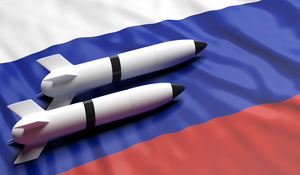The Challenge of Russia’s Non-Strategic Nuclear Weapons: Western Air Supremacy as One Russian Justification for NSNW

Author(s): Boone, R. (National Strategic Research Institute, University of Nebraska); Rehbein, D. (National Strategic Research Institute, University of Nebraska); Swegle, J. (National Strategic Research Institute, University of Nebraska); Yeaw, C. (National Strategic Research Institute, University of Nebraska)
Publication Preview
Significant and enduring US/NATO advantages in aircraft and precision-guided munitions drives the Russian need for a varied and large stock of non-strategic nuclear weapons (NSNW). NATO nations, particularly those on the eastern periphery of the alliance, perceive a need for this defensive air combat capability to ensure their security. Russia views events – such as the Kosovo War and Desert Storm – as validating its fear that these capabilities could be used offensively against it. Moreover, for historical and geographical reasons, Russia is apprehensive about threats all along its dynamic European border. Against large numbers of truly fifth-generation F-22s and F-35s, backed by fourth-plus-generation F- 15EXs and Block III F-18E/Fs, Russian air defenders will likely experience high early attrition rates in a military conflict. The United States is expected to retain this advantage well into the future, as it is already flight testing is latest sixth-generation fighter aircraft. Based on this firm sense of technological and numerical inferiority, Russian political and military leadership perceives the need for a range of non- strategic nuclear capabilities.
Supportive Russian research into, and presumptive development of, much lower-yield nuclear warheads in the range of tens to hundreds of tons for non-strategic nuclear weapons has reduced the barriers to use. As examples of conventional explosions in this range, we note that ten tons is comparable to the GBU-43/B Massive Ordinance Air Blast bomb dropped in Afghanistan, while a yield of several hundred tons is comparable to the 2020 fertilizer blast in Beirut that killed over 200 people. Underwriting this dependence on NSNW, Russian military analysts perceive a “gap” between NSNW use at some very limited level of violence and the necessary conditions perceived as credible for even a limited strategic nuclear response. Fundamentally, in this paper, we argue that Russian military planners and political leaders perceive a need for theater range, very- and ultra-low-yield nuclear systems in order to blunt the US/NATO air war that it expects as the inevitable opening gambit of any conflict with the West. Further, this employment of NSNW should be seen as Moscow’s most probable pathway across the nuclear threshold.
Despite a renewal in the bilateral Strategic Stability Dialogue, the “trades” involved in attempting to limit the class of NSNW applicable to the air-superiority issue would be highly asymmetric and would involve weapons on each side that are regarded as fundamental defensive capabilities by their holders and as highly threatening by the other side.
Comments